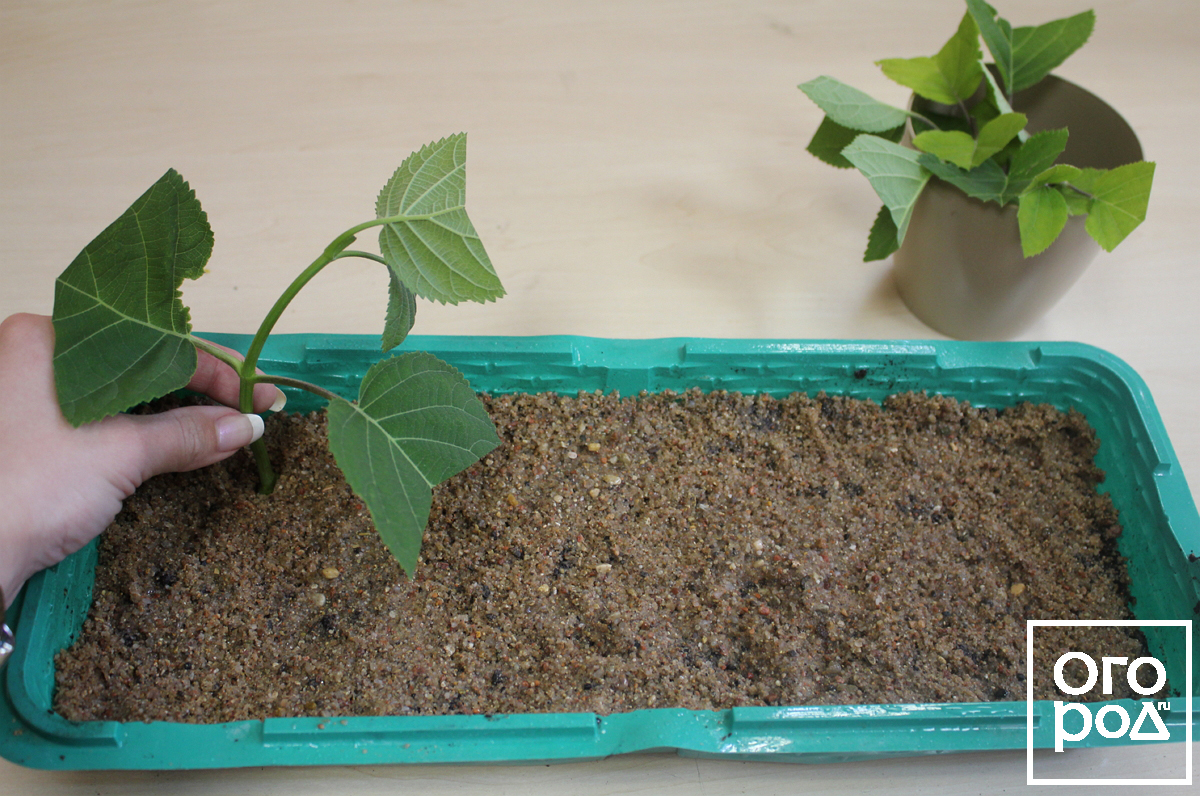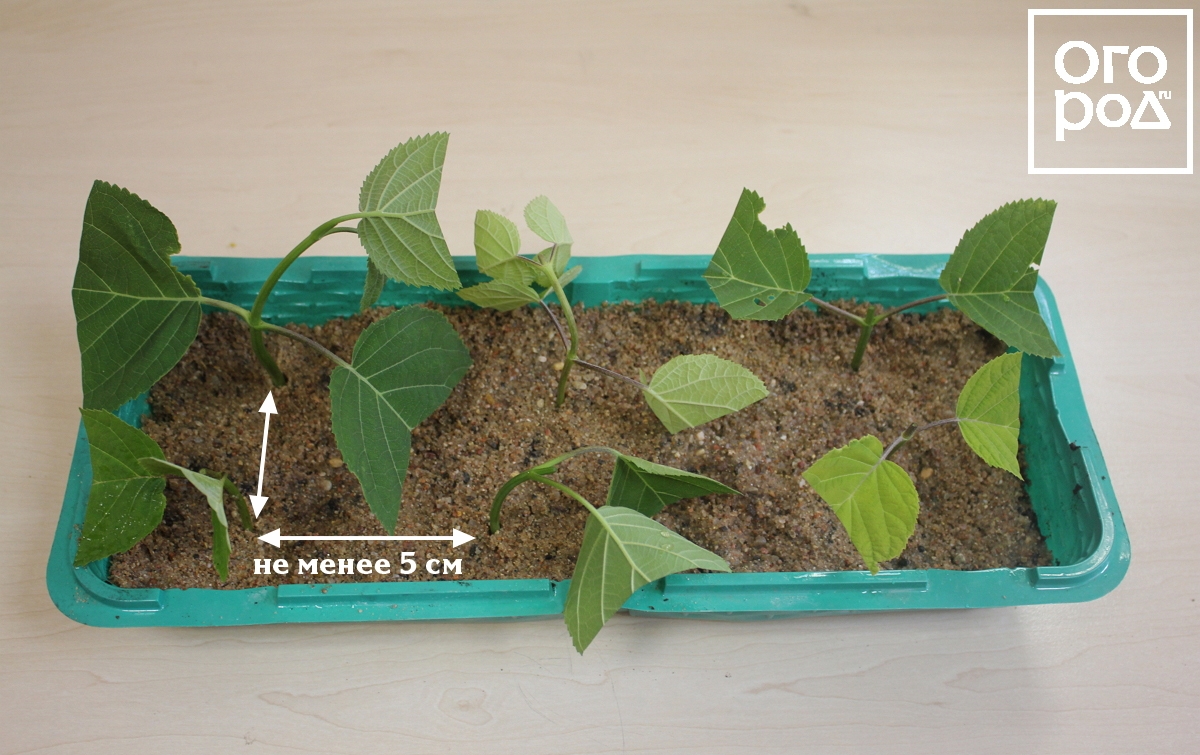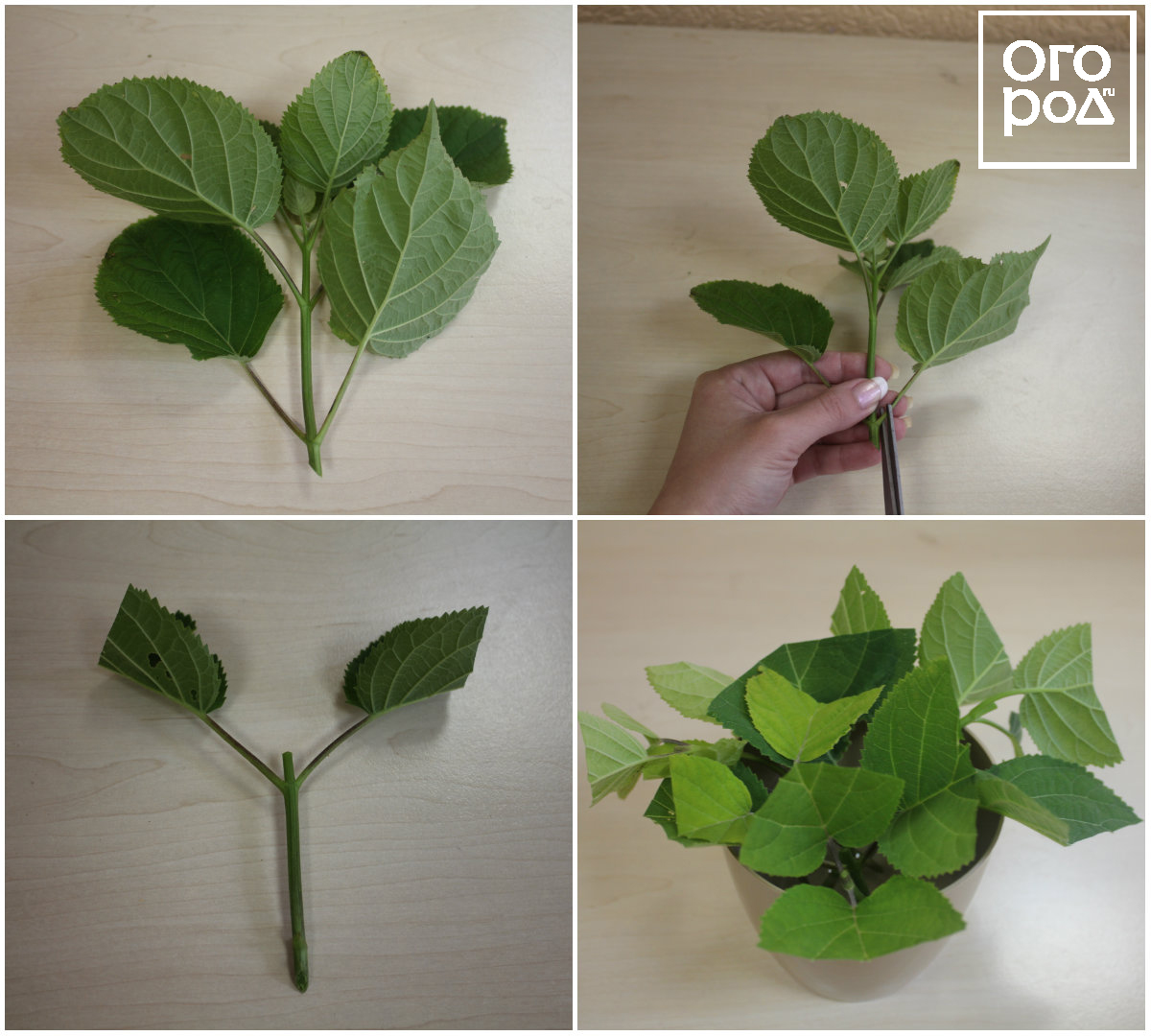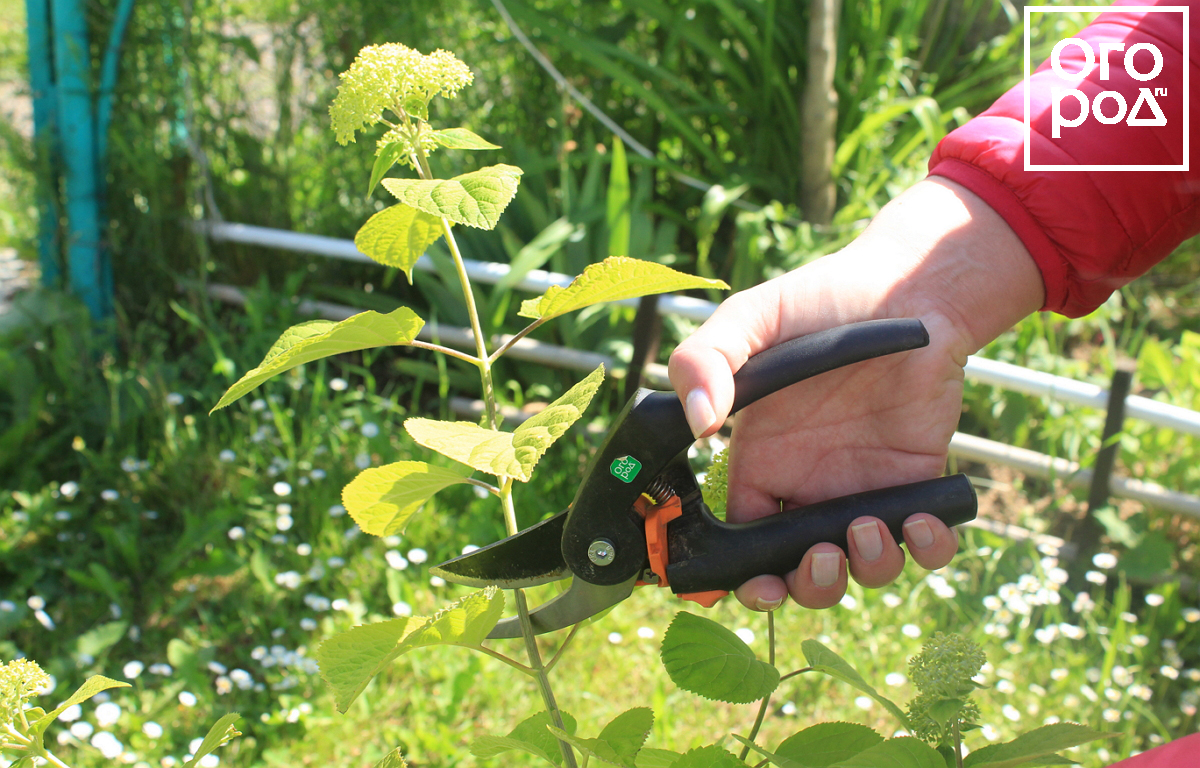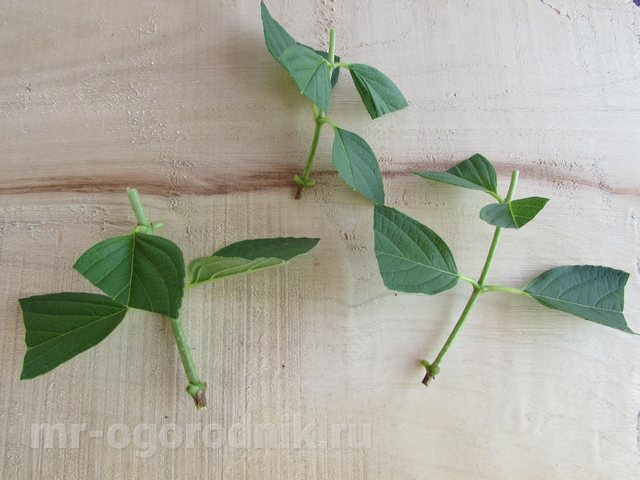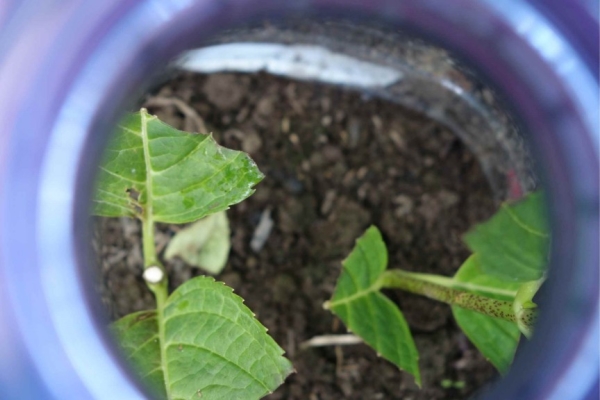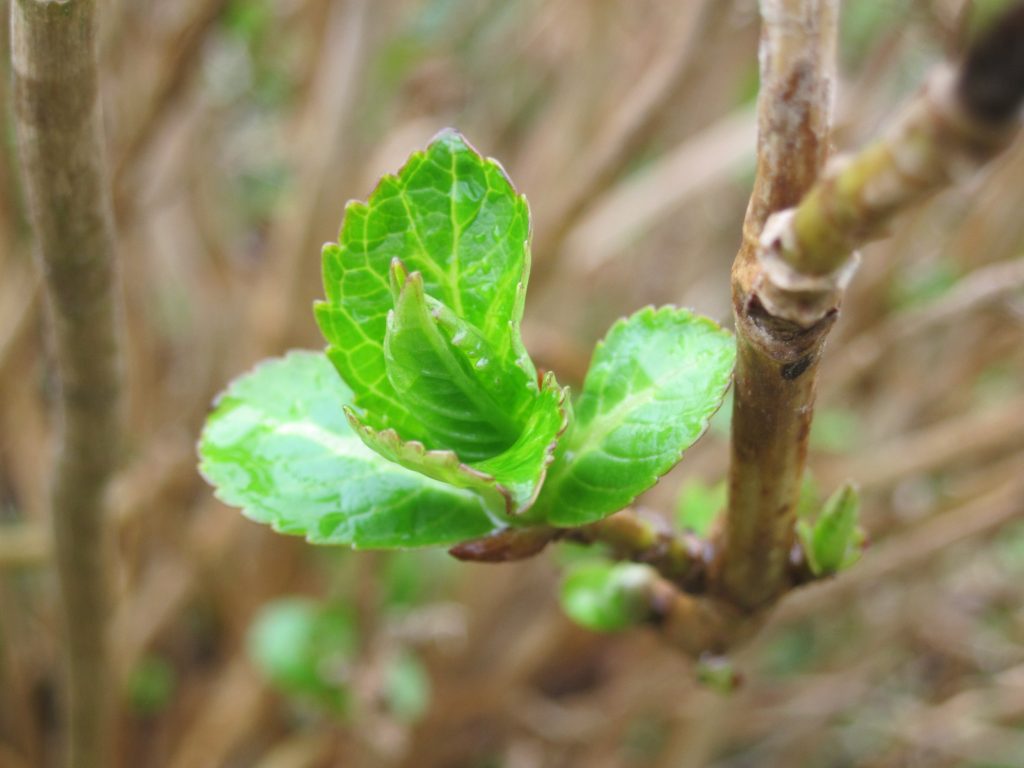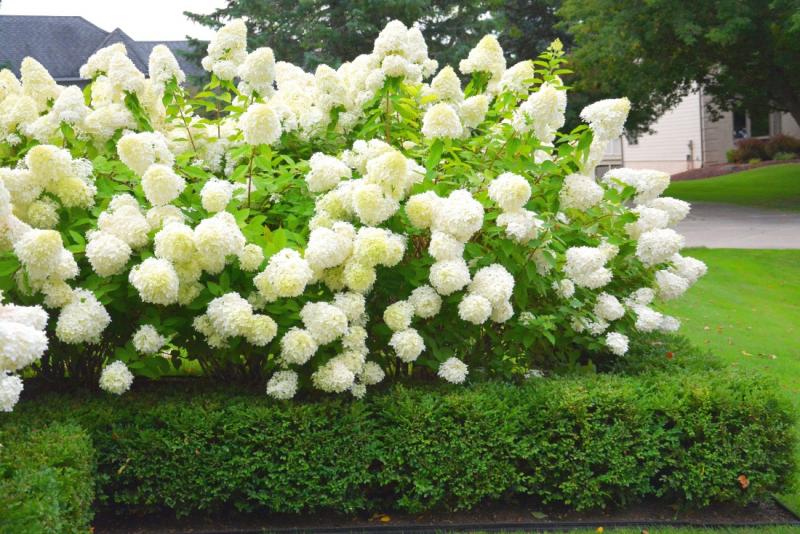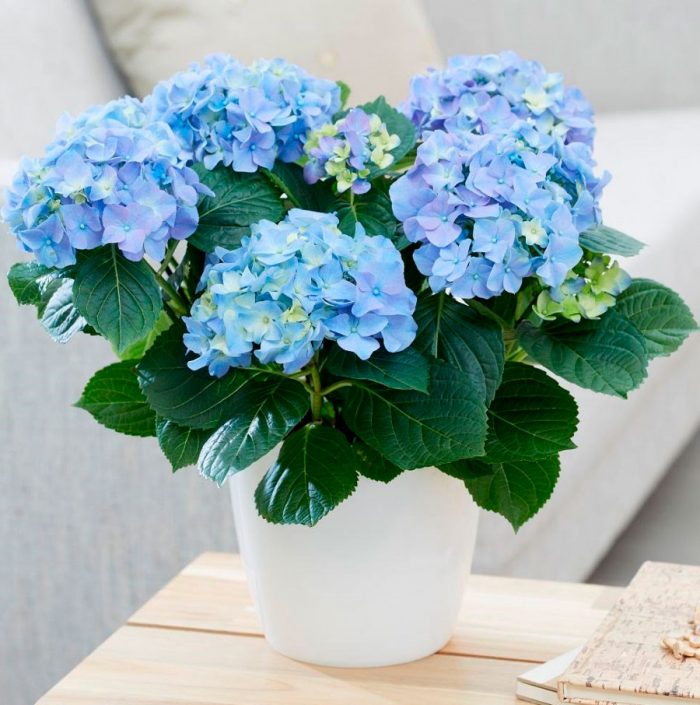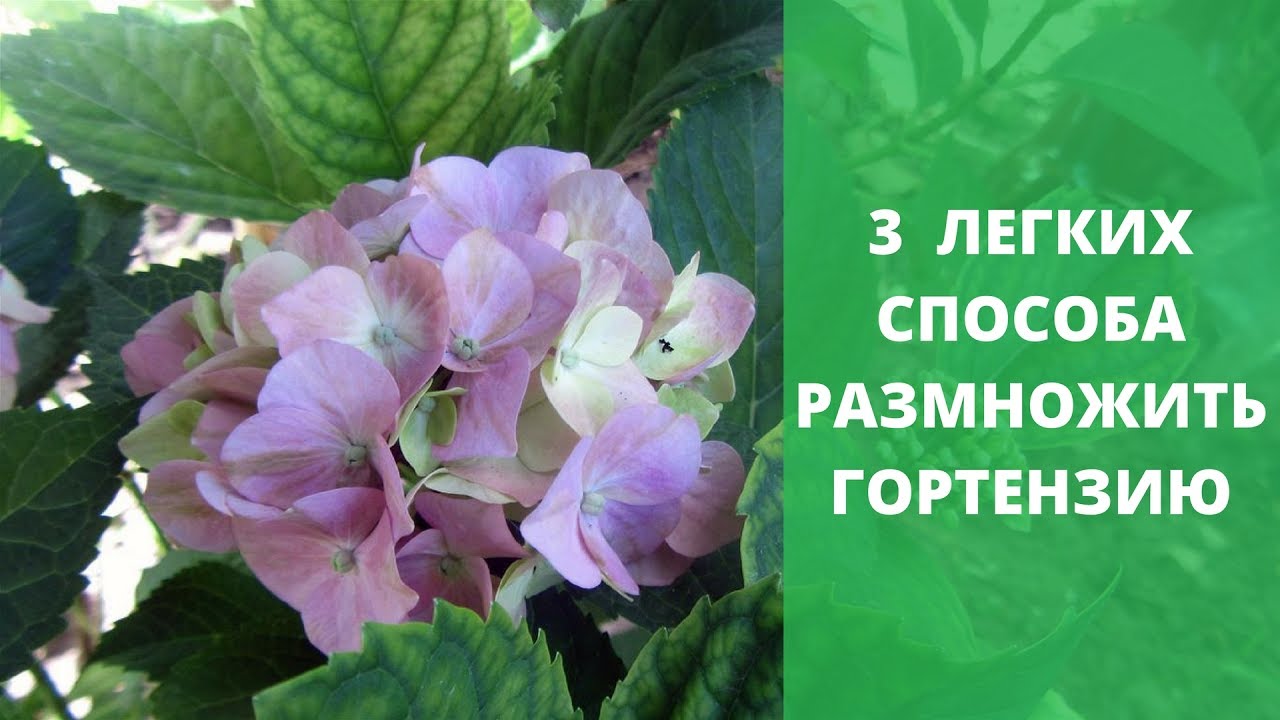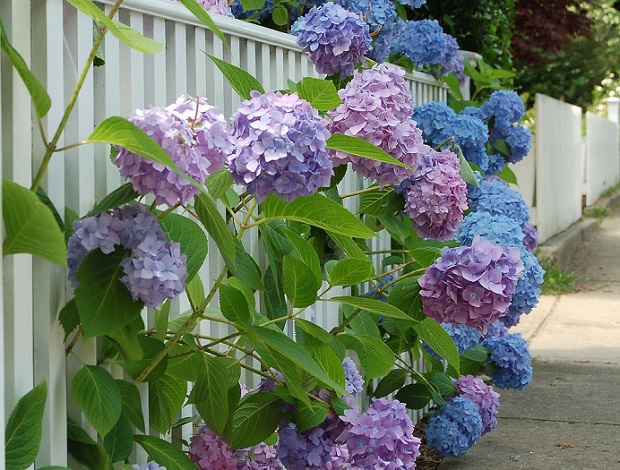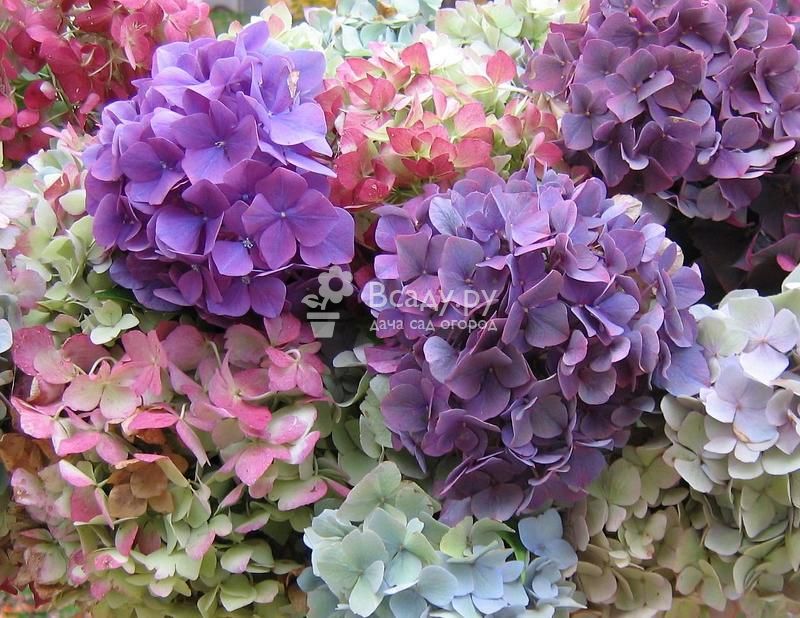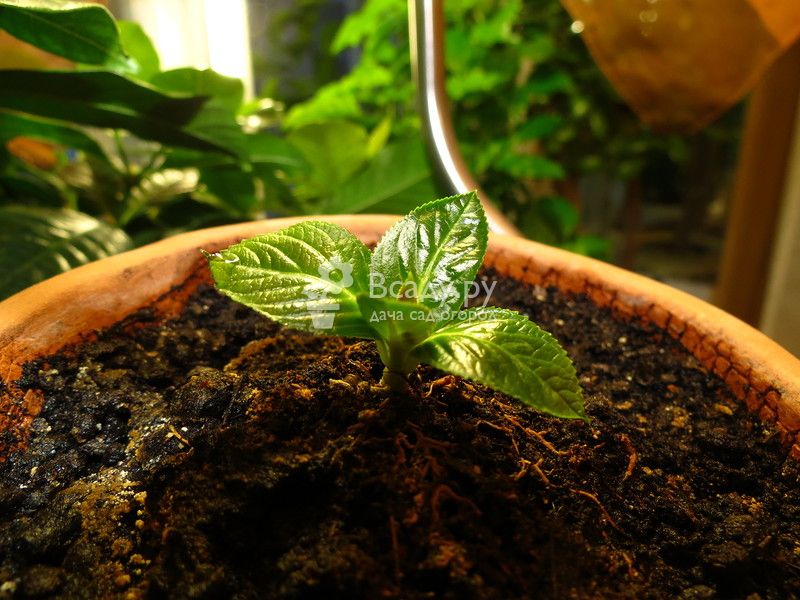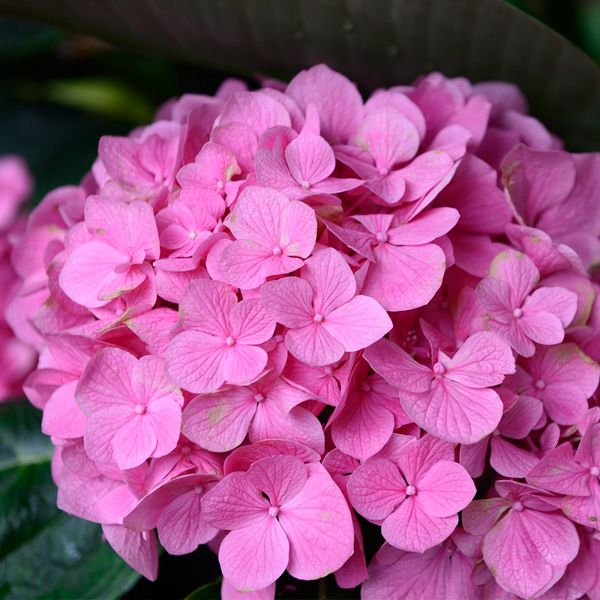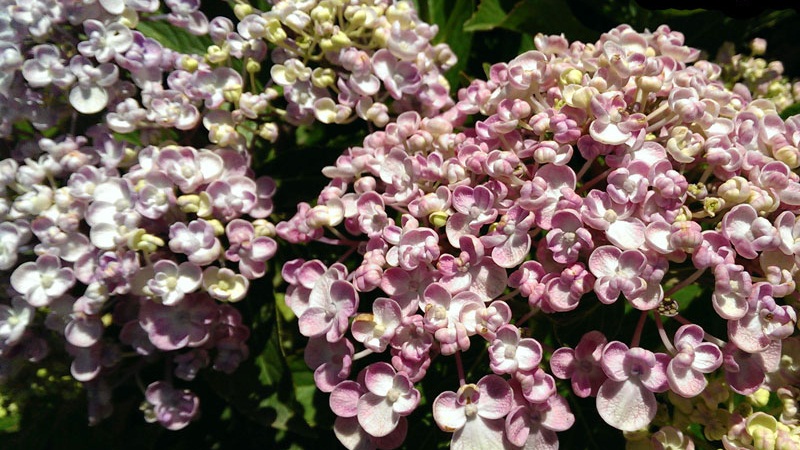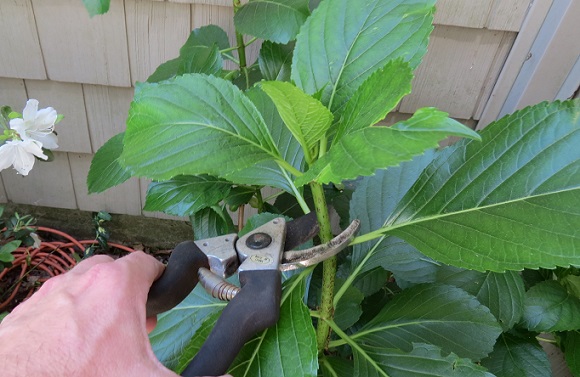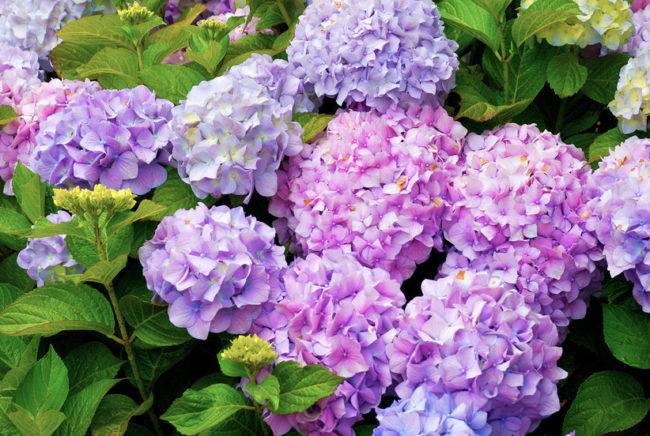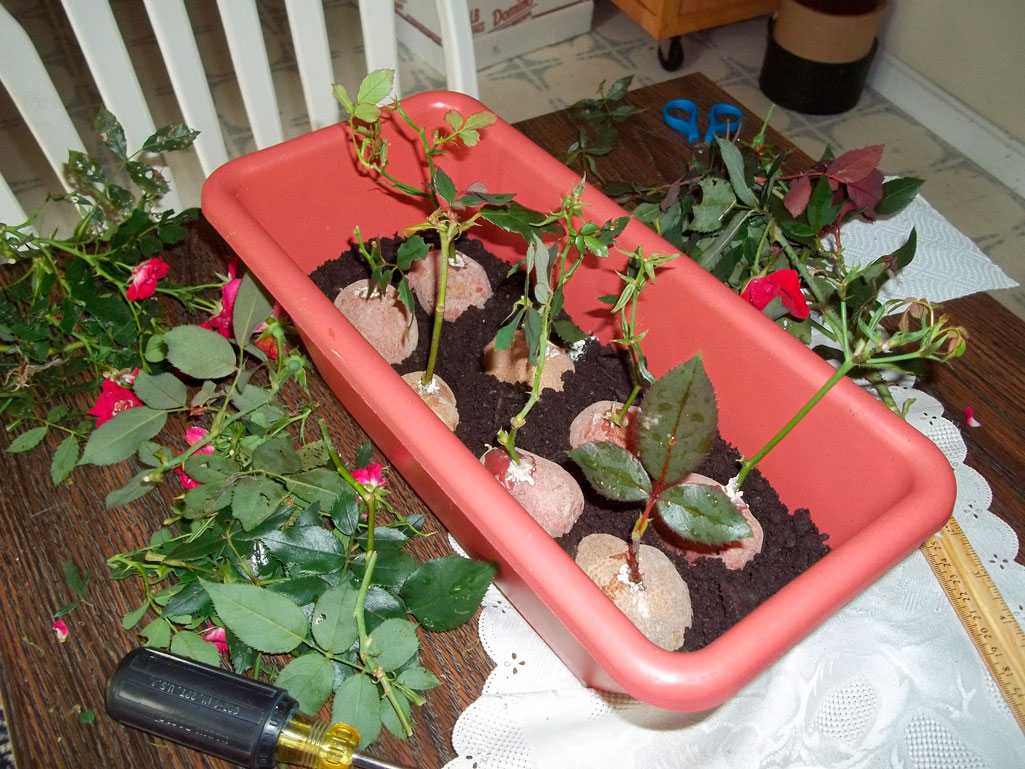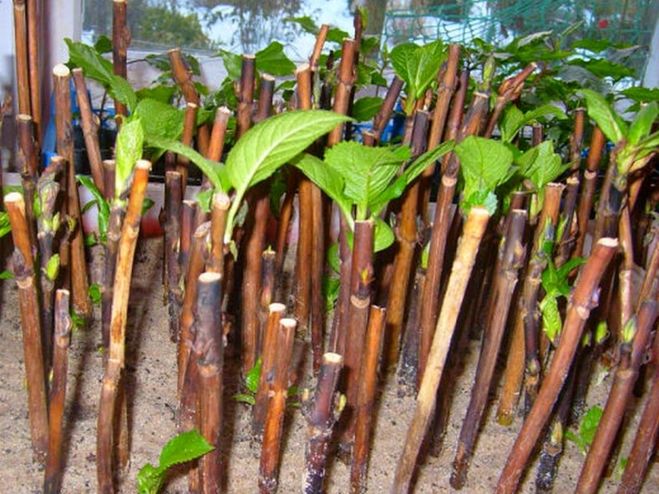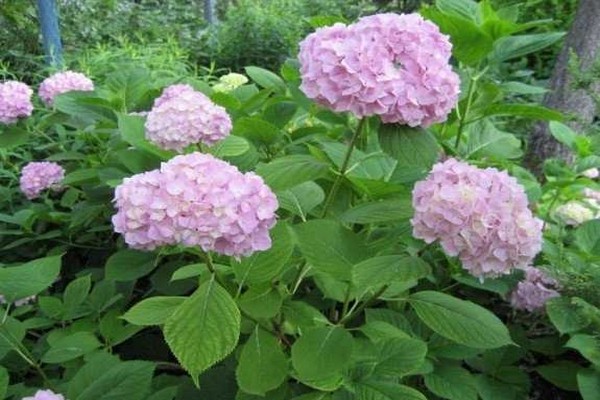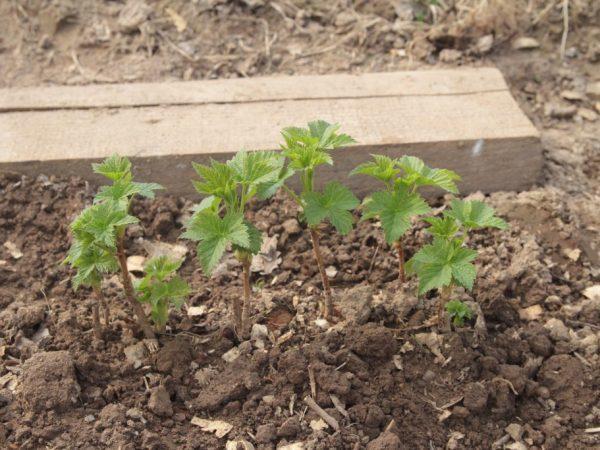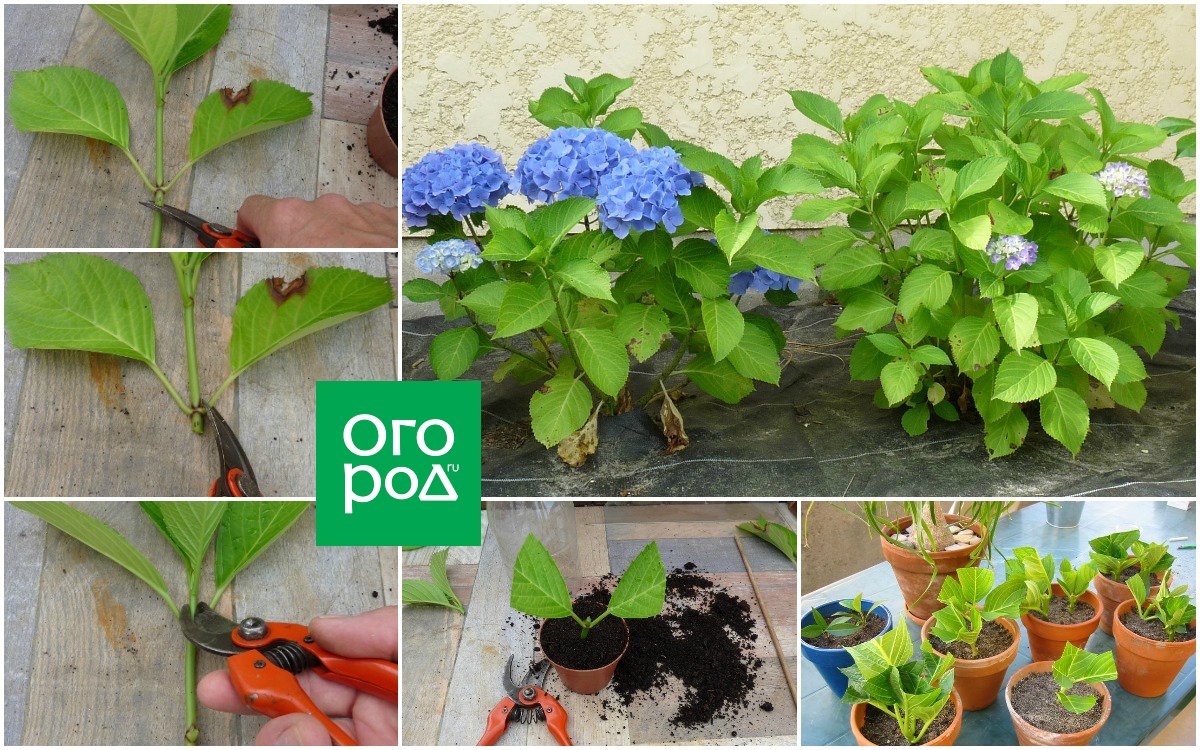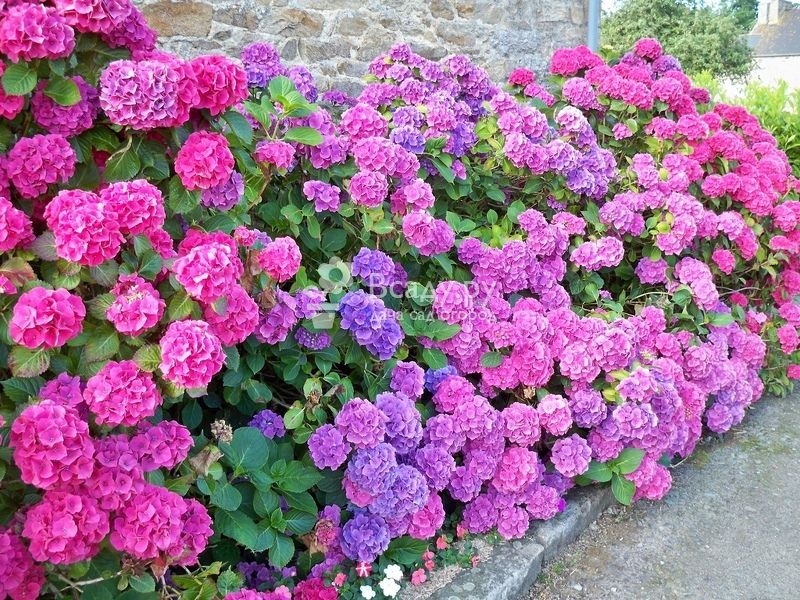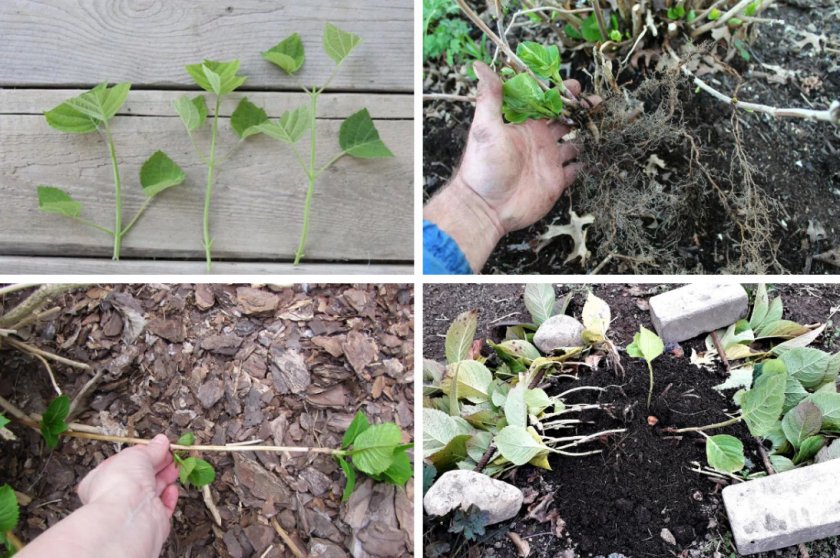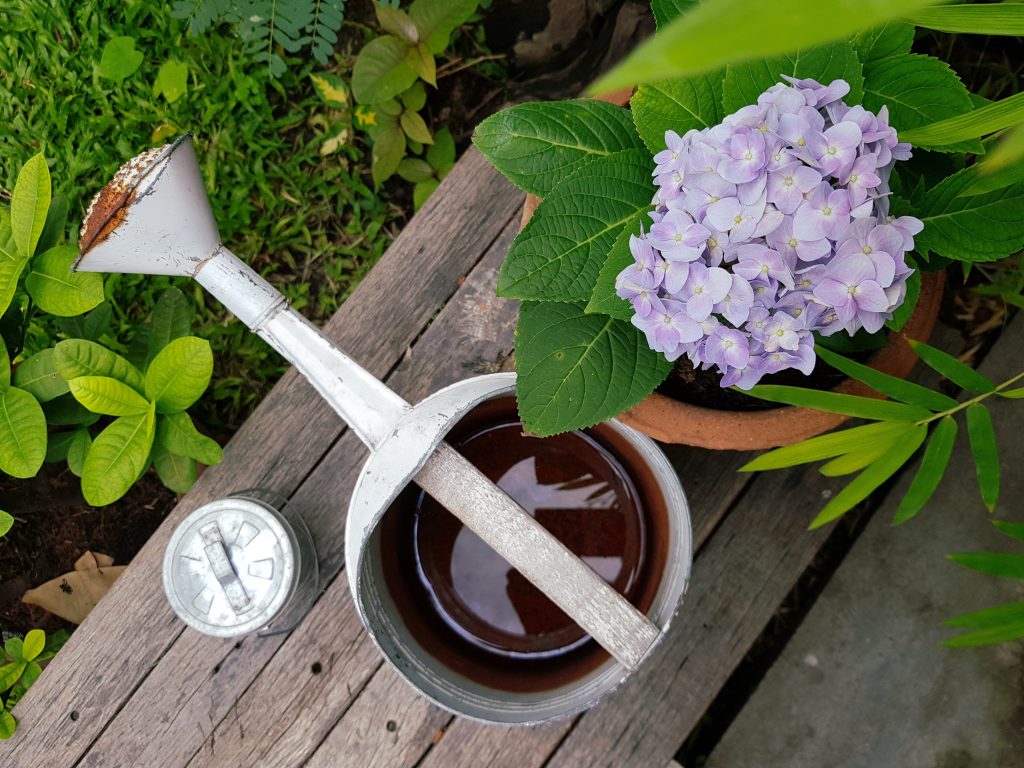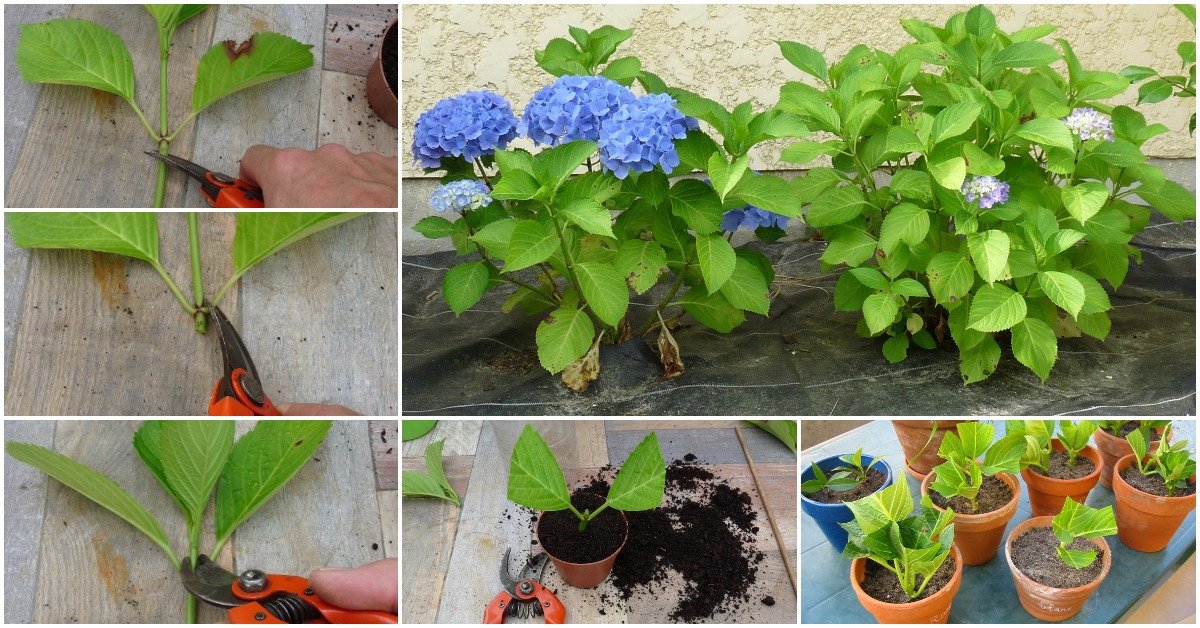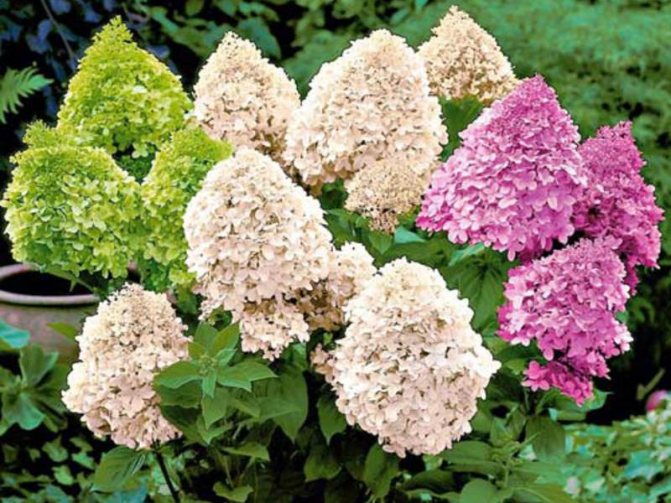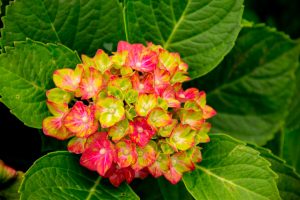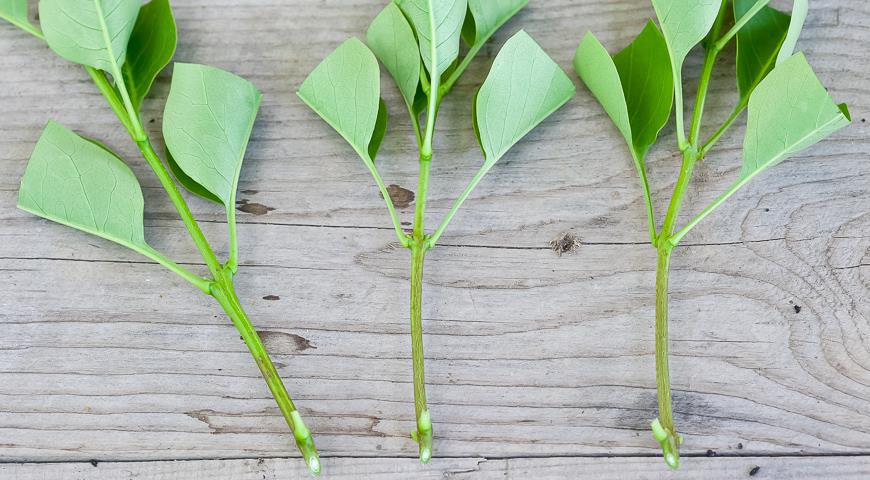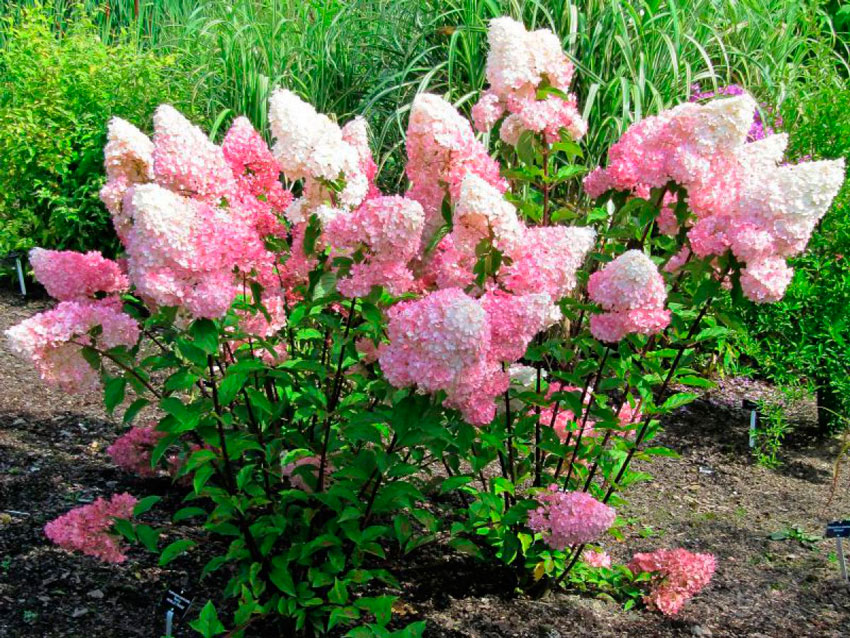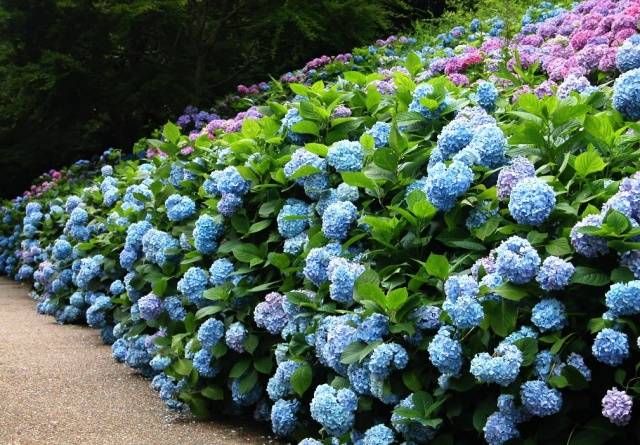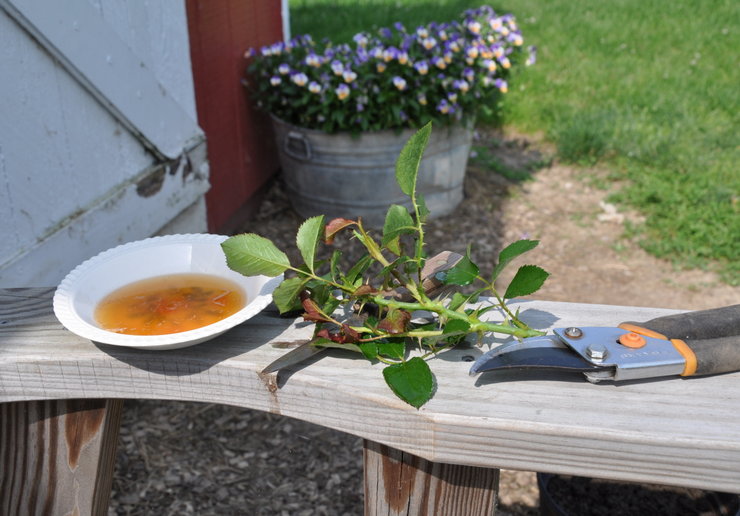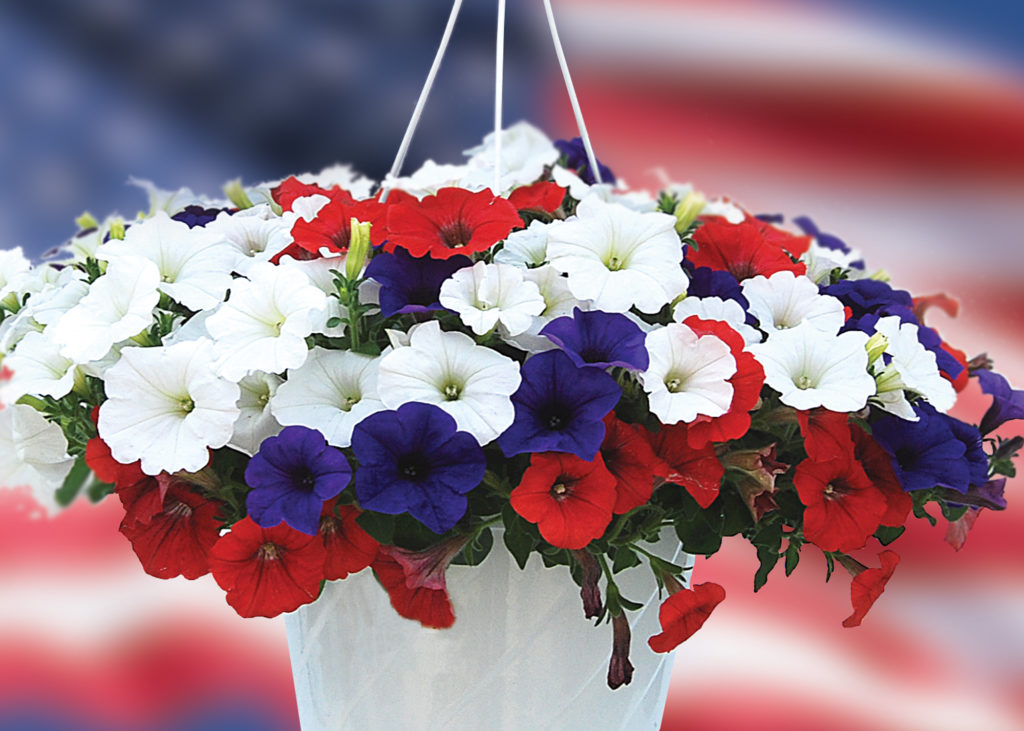Harvesting cuttings
Green cuttings are leafy parts of the stem with one or more buds. It is preferable to take cuttings from young plants; very old mother plants are preliminarily subjected to rejuvenating pruning. The best material for cuttings are lateral shoots that form on last year's growths in the lower, but well-lit part of the crown, which have large developed buds and do not carry signs of disease. Upright shoots as well as ankle tops will take less root, as they do not contain enough carbohydrates for successful rooting.
In the process of harvesting cuttings, it is important to ensure the preservation of moisture in the tissues, on which the success of rooting largely depends. Shoots are cut early in the morning, when all plant tissues are saturated with moisture
At all stages of working with cuttings, they should not be allowed to dry out; cut shoots should be immediately placed in the water in the shade. Cutting cuttings start as quickly as possible. If transportation is required, cuttings, without spraying with water, are placed obliquely in a container with wet sphagnum. In such packaging, they can be stored in the refrigerator, but the total storage duration should not exceed 2 days.
Cuttings are cut 8-12 cm long with two or three internodes; plants with short internodes may have more. In a number of plants - roses, rhododendrons, hydrangeas, grapes, mock orange, lilac cuttings with one axillary bud, called leaf buds, take root well. Such cuttings allow you to get a large amount of planting material of valuable species and varieties with a small amount of material for cuttings. When propagating by cuttings at the optimal time, it is better to use the middle and lower parts, and in the later periods - the upper part of the shoot. Cutting is done on a hard board with a very sharp tool - a grafting knife or a blade that does not squeeze the tissue. The lower cut is made oblique to increase the suction surface, 1 cm below the kidney, upper - straight, directly above the kidney
In large-leaved plants (for example, lilac, viburnum, vesicle), to reduce the evaporation area, the leaf blades are cut by ½ or 1/3, but in difficult-to-root, as well as variegated, yellow-leaved, purple forms with a low chlorophyll content, this technique should be used carefully, since assimilation may not be sufficient to ensure root formation. Truncation of leaf blades would be good to do even on the eve of cutting cuttings, this will also reduce moisture loss
The cuttings are sprayed with water and placed under a non-woven covering material before planting to prevent them from withering.
To increase the efficiency of rooting, simple techniques are used: incising the bark near the buds by 2 mm, bending the branches, banding with copper wire or etiolating the shoots. All these measures help to prevent the outflow of carbohydrates and growth substances - auxins from the shoots. Etiolation is carried out by tying the shoot with foil, paper or black non-woven material 2-3 weeks before grafting. In the shoot, a redistribution of metabolism occurs and the effectiveness of rooting increases.
Peculiarities
The most common way of breeding panicle hydrangea is propagation by cuttings, and it is ideal for its other varieties, including petiole (curly) and tree-like
A definite advantage of the method is the preservation of all varietal characteristics of the original plant, this is especially important in relation to rare and valuable varieties, since their reproduction provides for the receipt of unique specimens


However, in comparison with the adaptation of cuttings in the soil, it is more difficult to carry out cuttings, and you need to know some of the nuances of the procedure, as well as the rules of agricultural technology that guarantee a positive result.
As for the features of cuttings of paniculate crop species, you should know:
it is wiser to carry it out in the summer, since often spring and autumn procedures do not give the desired result - seedlings can take root and develop poorly;
special attention should be paid to the choice of the place - it is better to choose a well-lit area near hedges or buildings that protect the plant from drafts and strong gusts of wind;
when planting, in order to avoid slow growth and diseases, it is worth being picky about the soil - alkaline soils are contraindicated for hydrangeas;
before the onset of the first wintering, it is necessary to seriously think about how to reliably protect young rooted cuttings - this applies to a greater extent to cold regions.
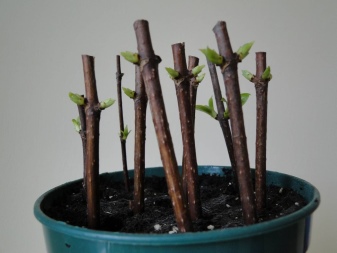
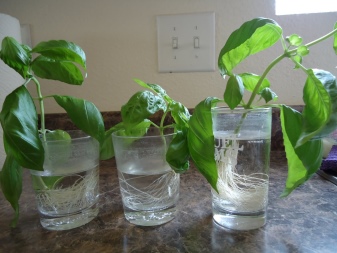
Otherwise, cuttings of paniculate varieties are not much different from this procedure for other hydrangeas, but all agrotechnical work must be carried out in a timely manner.
How to grow a hydrangea from a cutting
Many people are interested in how to properly cut a hydrangea. To carry out this procedure, you need to select healthy shoots and root them.
How to choose and cut a stalk
It is best to carry out cuttings of panicle hydrangea in summer, when buds appear on the mother plant. For cutting, it is worth choosing young green shoots that have a flexible structure and grow in a lighted area. They should be at the bottom of the main part of the bush. Also, lateral annual shoots are suitable for cuttings.
Important! To achieve good results, it is recommended to take the upper cuttings of the shoots. However, they should not be too thin, as there is a high likelihood of rotting.
When preparing cuttings, a sufficient amount of moisture must be retained in them in order to avoid irreversible changes. Therefore, experienced gardeners recommend adhering to these recommendations:
- Shoots to be rooted should be cut on a sunny morning or cloudy weather. After which they must be immediately divided into cuttings.
- Remove the upper fragments with buds.
- Divide the rest of the shoot into fragments with 2-3 pairs of leaves.
- Remove the lower leaves, and shorten the remaining ones by half or by a third.
- Soak the cuttings in a growth promoter. They must stand in it for 2 hours.
- Before planting, disinfect the upper part with brilliant green or garden varnish. You can also use charcoal.

Hydrangea reproduces well by cuttings
How to get roots in water
At the initial stage of root formation, gardeners often soak the cuttings in water. The liquid should be soft with a minimum content of calcium salts. You can add a little growth stimulant to it. The length of the cuttings should be at least 10 cm. Moreover, they should contain 2-3 internodes.
When cutting hydrangeas, the foliage from the cuttings must be removed to stimulate the process of root formation. To root the plant, you need to use a transparent container, since the light promotes the formation of the root system.
Important! In most cases, up to 3 cm of roots appear on the cuttings in 2-3 weeks. After that, they can be planted in the ground.
Propagation of hydrangea by cuttings is simple and affordable, but it has certain disadvantages. With a prolonged stay of cuttings in water, decay processes begin. Therefore, the water should be changed systematically, avoiding the appearance of a musty odor. To protect the cuttings from decay, it is worth placing activated carbon in the water.
How to root a cutting in the ground
To plant plants in the garden, you will need light soil. To make it, you need to mix peat or humus with washed sand. These components are combined in a 2: 1 ratio.
In the resulting substrate, cuttings should be planted obliquely, deepening them by 2-3 cm.The plants should be planted at intervals of 5-7 cm.Then cover the substrate with a layer of sand 2 cm thick.
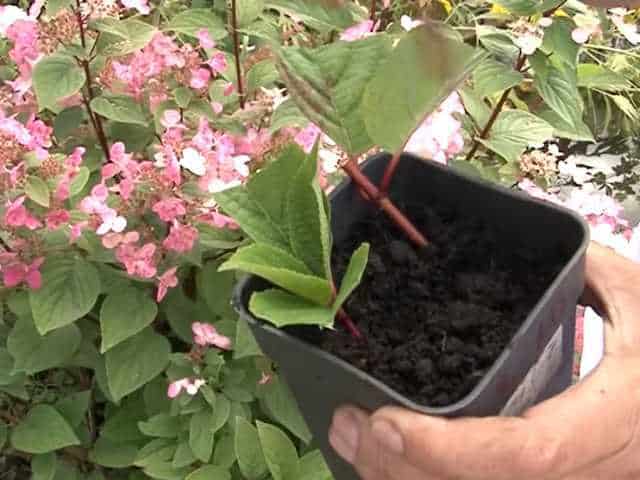
The stalk can be rooted in a special substrate
How can the rooting of cuttings be accelerated?
A useful technique that allows you to accelerate the formation of roots in cuttings and layering is furrowing, that is, applying shallow longitudinal cuts (grooves) on 1–2 lower internodes and nodes. The influx of growth substances increases to the wounds, which facilitates the development of roots.
The use of aloe juice to stimulate root formation
Chop the bottom aloe leaves, put them in a bag and refrigerate in the vegetable compartment for a few hours. After that, squeeze the juice from the leaves and add 7-10 drops to a glass of water. Place the cuttings in the solution for 2 days.
Application of the drug "Kornevin" to stimulate root formation
It is sold in powder form and is used for dusting the sections. The active ingredient is β-indolylbutyric acid.
Application of the drug "Ukorenit" to stimulate root formation
The method of application is the same as for Kornevin. The active ingredient is charcoal powder and β-indolylbutyric acid.
Application of the drug "Heteroauxin" to stimulate root formation
Sold in powder and tablet form. It is used to soak the ends of cuttings. The active ingredient is potassium salt and β-indoleacetic acid.
the use of Epin to stimulate root formation
Treatment with stimulants should be done in the dark, at a temperature of + 18 ... + 22 ° C. The cuttings are immersed in the solution so that the leaves are not processed.
Specificity of cuttings of various types of hydrangea
In order to propagate hydrangea as efficiently as possible, it is necessary to take into account its typological features. For example, cuttings of panicle hydrangea are carried out in the spring, and tree-like ones - in the fall.
When preparing large-leaved varieties for transplanting, their leaves are always cut in half, and when planting in open ground, the tops of the seedlings are cut 10 cm from the ground for better rooting and tillering. In the case of picking up planting material from panicle hydrangea in the fall, woody shoots are chosen for cutting.
Video about 3 ways to grow new seedlings.
Growing from cuttings is a popular breeding method for hydrangeas. It does not require much time and effort, and the percentage of rooting shoots is relatively high. The most suitable time for propagation by cuttings is late spring. During cosmetic pruning of the bush, gardeners not only give it the desired shape, but also collect planting material. Over the summer, cuttings take root, undergo adaptation and become suitable for autumn planting in open ground, followed by wintering under cover.
Propagation by cuttings
This breeding method is considered the easiest and most effective and is practiced by many summer residents. The key to its success is the correct choice and preparation of planting material, as well as adherence to the technology of further care. So, the first stage of thuja propagation by cuttings is the selection of a suitable branch to obtain a cuttings. To do this, it is advisable to choose a strong two- or three-year-old shoot in the upper part of the crown and pluck a 20-centimeter shoot from it. Cutting the stalk with a garden tool is not recommended; the best thing is to simply pull it out of the mother branch from top to bottom.
With the help of a sharp knife, the "heel" is cleaned from the remnants of the bark, thus preventing rotting or drying out of the cutting. Then the lower part of the shoot is carefully cleaned of the remnants of needles, since it can also rot when it comes into contact with the ground or nutrient mixtures. The next step is to prepare a solution of any growth stimulant, for example, "Kornevin", and place the cuttings in it for a period of 12 to 24 hours. While the shoot is being processed, a special substrate is prepared, consisting of turf, peat and river sand, taken in equal parts.
In order to avoid the multiplication of pathogens, for which sand is an ideal environment, it must be calcined in the oven, heating it up to 250 degrees.The processing time should be at least 20 minutes, after which the oven is turned off and the sand is allowed to cool naturally. However, experienced gardeners recommend preparing a mixture for rooting in advance and explain this by the fact that after calcining the sand it takes at least a month to restore the natural microflora.
A container with a diameter of at least 12 cm is taken as a container and small holes are made in its body and bottom. This will promote full air exchange and the removal of excess fluid. Next, they begin to form a drainage layer, which can be used as river pebbles or expanded clay. After everything is ready, the turf, sand and peat are thoroughly mixed in a large bucket, poured into a container, spilled with a dark pink solution of potassium permanganate, and the cuttings are rooted. For this, holes are made with a pencil 3-4 cm deep and shoots are placed in them. At the same time, they make sure that the buried part of the cutting is completely cleaned from the bark, and the needles do not touch the soil. The earth around the cutting is well compacted and tamped, after which the planting is slightly moistened.
Next, the container is covered with a film or glass jar and removed to a damp place. In this case, the air temperature should be from +17 to +23 degrees
It is important to ensure that direct sunlight does not fall on the plant, as they can have a detrimental effect during the rooting stage. Every day, the ground around the seedling is sprayed from a spray bottle, and if the weather is too hot, this procedure is done twice a day.
In this case, you need to watch that drops of water do not fall on the needles, otherwise it may begin to rot.
After a couple of months, it will become clear which cuttings the rooting process was successful, and which plants died. If the cuttings were carried out in the spring, then the rooted seedlings can be planted in open ground at the end of autumn, while the summer specimens are only the next year. For the winter, they are placed in a bright room at a temperature of + 10-15 degrees and with the onset of spring they are planted in a garden bed.
In addition to the nutrient substrate, peat moss - sphagnum is often used. Below is a step-by-step description of this method, which, according to experts, gives excellent results:
- so, a torn off 20-centimeter shoot is placed in a container with any stimulant of root formation and left for 12 hours;
- moss is poured with boiled water and left for 3 hours;
- a wide piece of fabric is laid out on the table, visually divided in half and sphagnum moss is laid on the top of the material;
- cuttings are placed on top of the moss at a short distance from each other, covering their heels with sphagnum;
- the bottom of the fabric is covered with the "planting" so that the needles of the shoots are free;
- the fabric is rolled up, placed in a plastic bag and hung in a bright place.
Thanks to sphagnum, the humidity level remains high for a long time, and its decrease is judged by the absence of condensation on the inner surface of the bag. In this case, immediately moisten the fabric roll with a spray bottle. Roots usually appear one month after the start of germination. The main advantage of vegetative reproduction is the possibility of obtaining a new tree within 3 years, with full preservation of the varietal qualities of the parent.
Processing and rooting
Before planting the cutting in the ground, you need to not only choose the right one, but also prepare it.
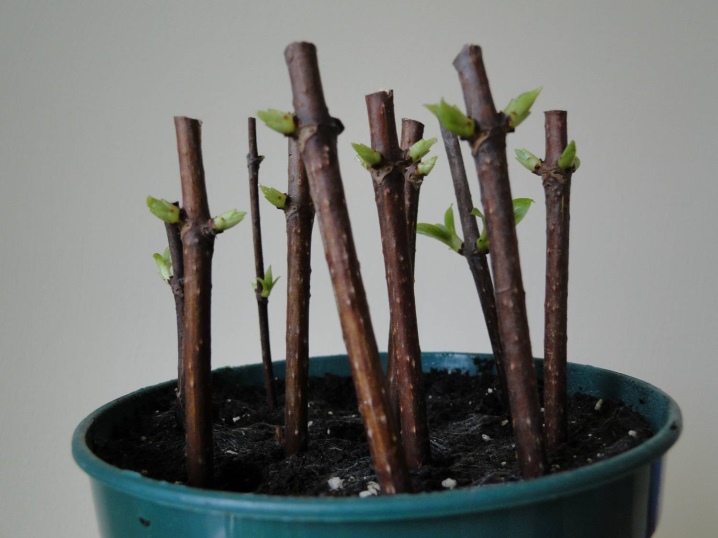
A few days before the planned cuttings, the shrub must be darkened, covering it from the sun with an impenetrable cloth. In the shade, the hydrangea should stand for at least 3-4 days, then it will be possible to start cutting the cuttings directly, using exclusively disinfected garden tools.Choosing cuttings with 3-4 buds, make a carefully oblique cut and immediately place them in special solutions that stimulate the formation of roots ("Cyclops", "Epin"). If there is no solution, then the cuttings are kept simply in water, and the cut areas are sprinkled with any growth stimulant. This will allow them to quickly form roots and later take root without problems.

To give the stems flexibility and disinfect them, they are additionally sprayed with a weak solution of potassium permanganate. After that, you need to root the cuttings in water or plant them in a substrate. Moreover, the first option is much simpler and more effective, since moisture is an ideal environment for the formation and growth of roots. Also, in a transparent container, it is much more convenient to observe the process of formation of the root system.
To root cuttings in water, follow these steps:
- prepare in advance a nutrient solution consisting of cinnamon powder and water (for 200 ml of liquid you need 1 tbsp. l. of the mixture);
- prepare a container, which is well suited for containers (flasks) with opaque walls (roots peck faster in them);
- place the cuttings in a container, immersing them at 1/6 of the total length (it is recommended to immerse no more than 2-3 cuttings in one vessel).
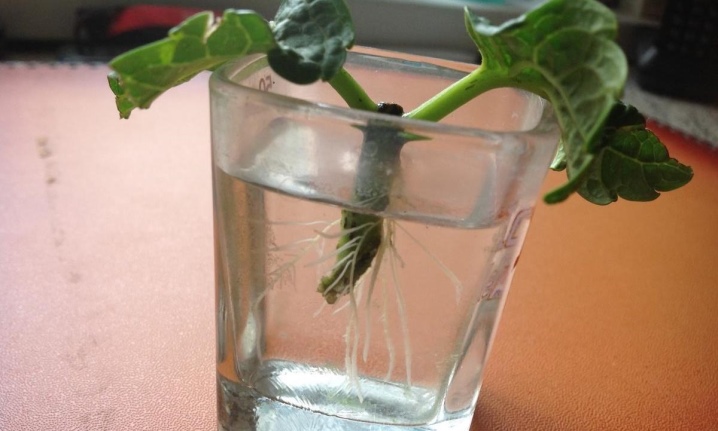
During rooting, the water in the vessel cannot be changed, and as the moisture evaporates, you can only add a filtered warm solution
At the same time, it is worth paying attention to the fact that the cuttings collected in the summer are placed on the platforms from the sunny side, and the cuttings cut in the fall - in shaded places. To avoid root decay, it is necessary to regularly aerate the solution.
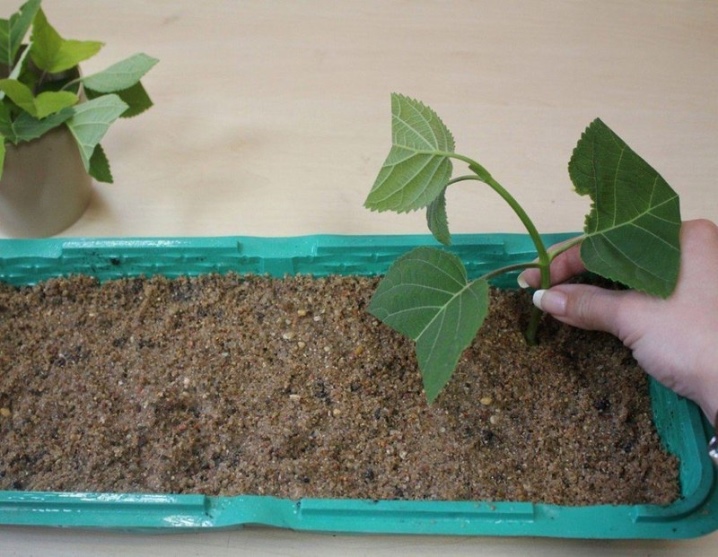
Shrub propagation by green cuttings
In late May - early June, cut the cuttings: elastic green shoots should be of medium length (6-15 cm) and have several leaves each. Make the lower cut 1-1.5 cm below the kidney, so that the diagonal cut is directed to the side opposite to the eye. The top cut should be over the kidney. Remove 1-2 bottom sheets, and cut the top in half. Then treat the lower part of the cuttings with a preparation that stimulates root formation: soak for 10-12 hours in a Heteroauxin solution (dilute 2 tablets in 1 liter of hot water, then cool the solution and immerse the cuttings to 1/3 of the height). Fill a container with sand or light soil and plant the cuttings at a 30-degree angle. Moisten the soil regularly.
Reproduction of lilac by cuttings: a step-by-step master class with a photo
An easy and effective way to propagate lilacs with green cuttings.
Make sure your gardening tools (knife, pruner, saw) are clean and sharp, otherwise the plant is at risk of getting sick and dying through the pruning wound.
Plants that can be propagated by green cuttings: elderberry, hydrangea, honeysuckle, kerria, magnolia, spiraea, stephanandra, henomeles, rose hips, buddleya, weigela, action, viburnum, cinquefoil, blister, lilac, forsythia, chubushnik.

